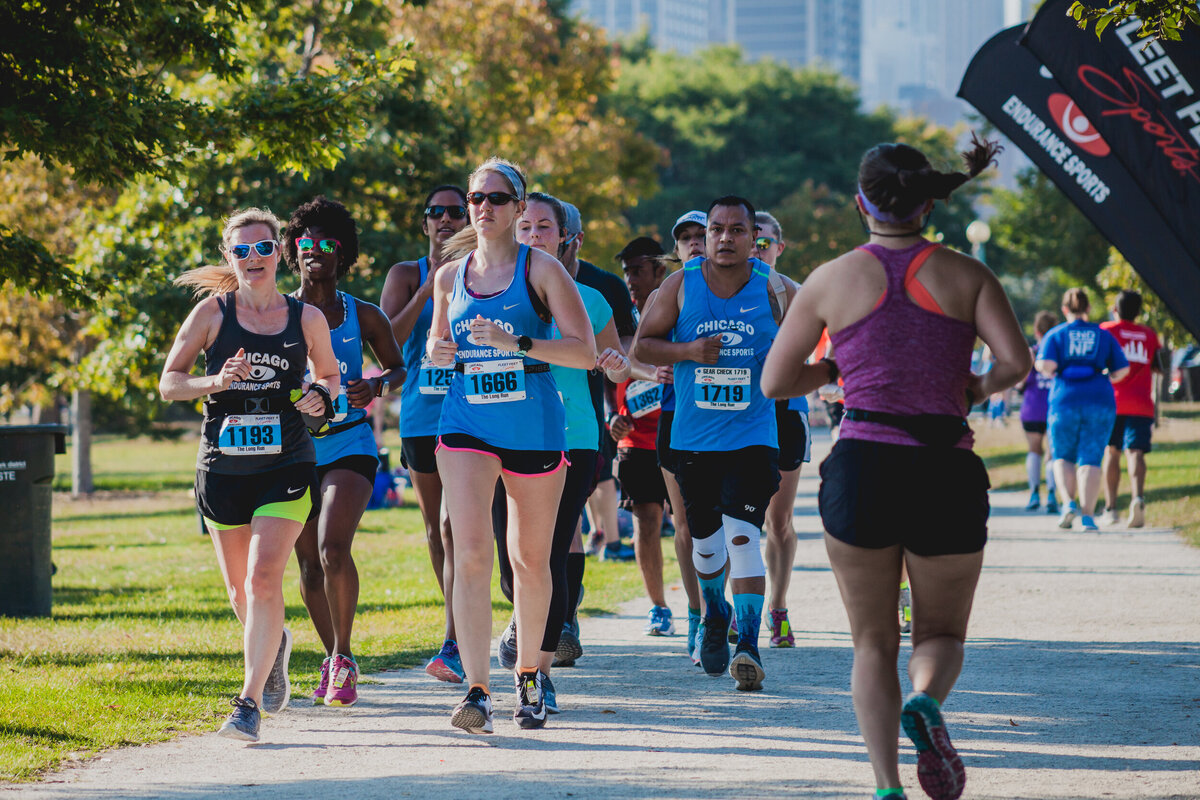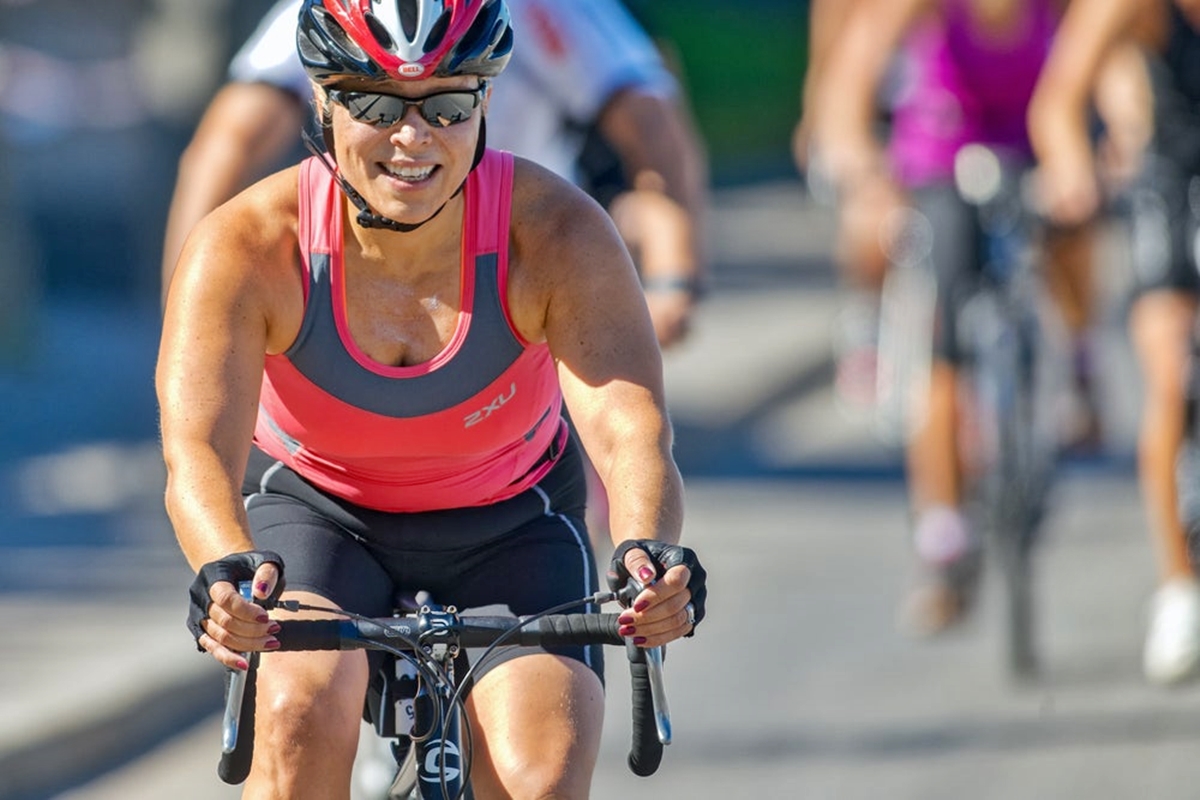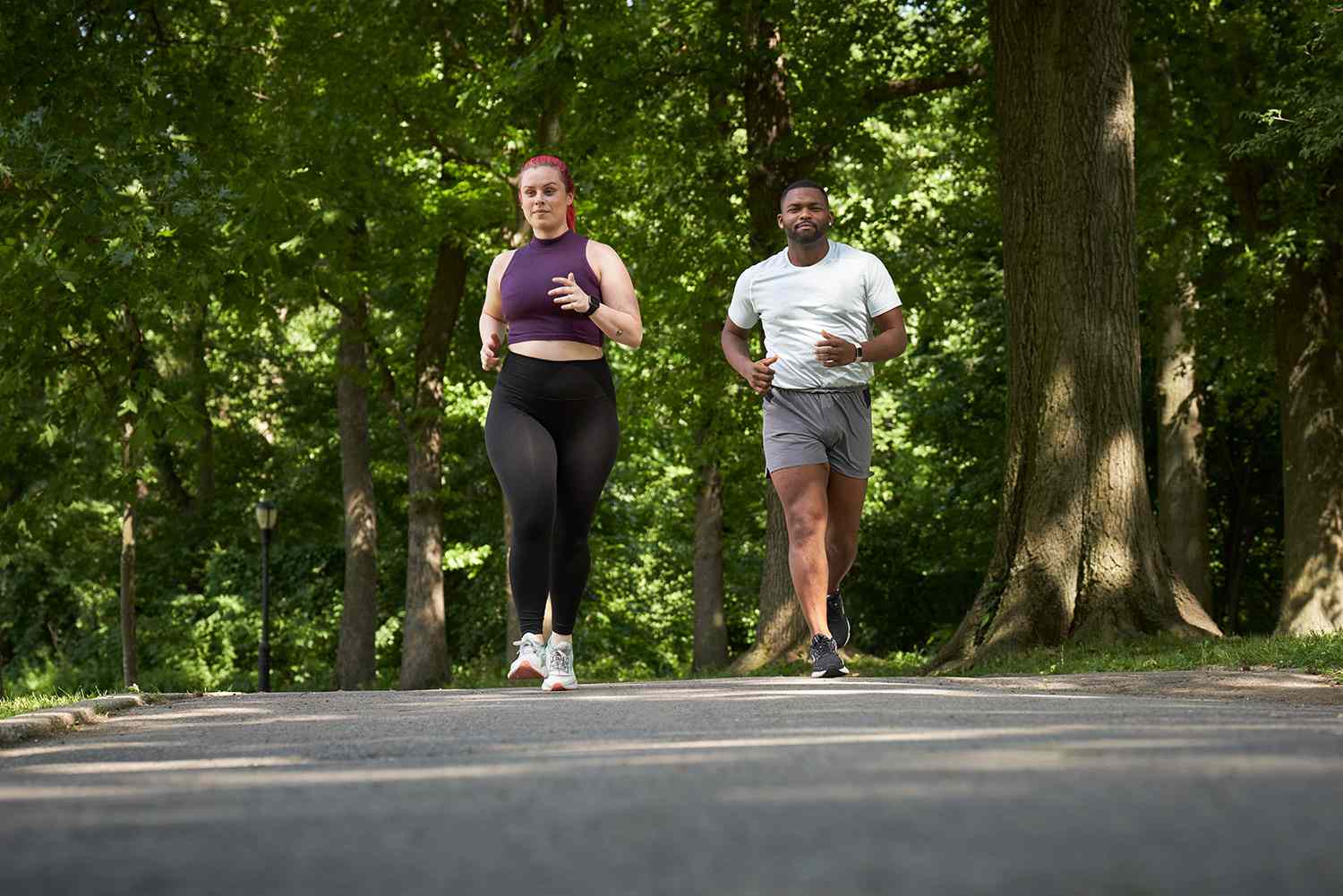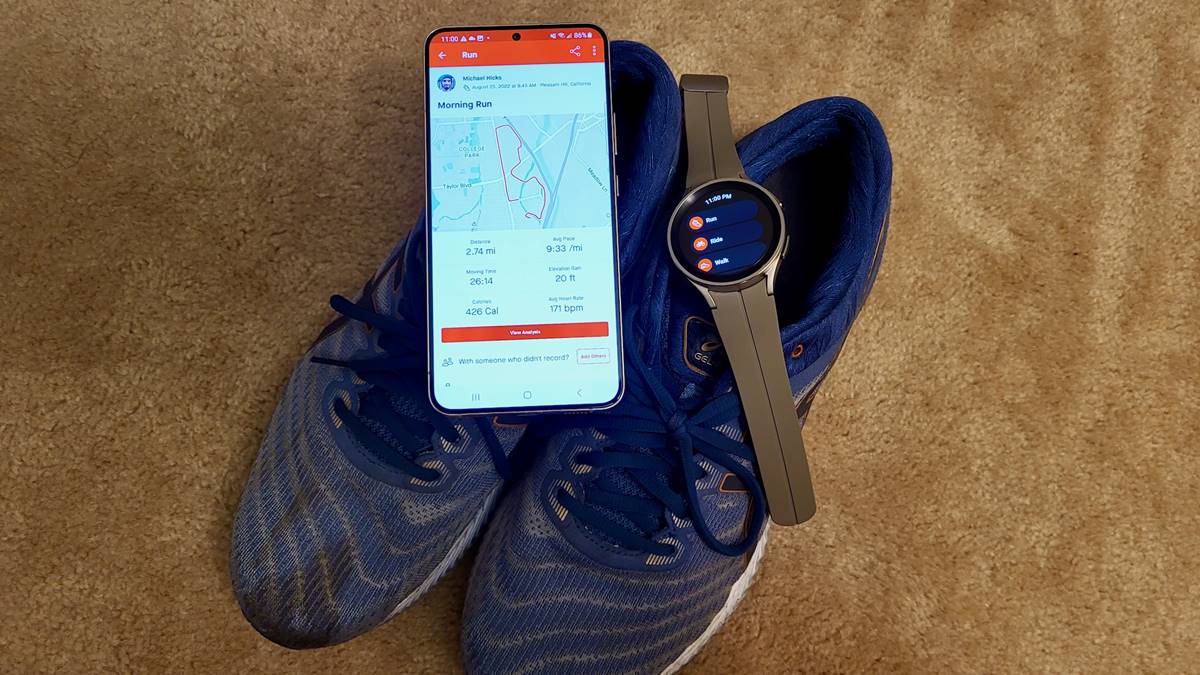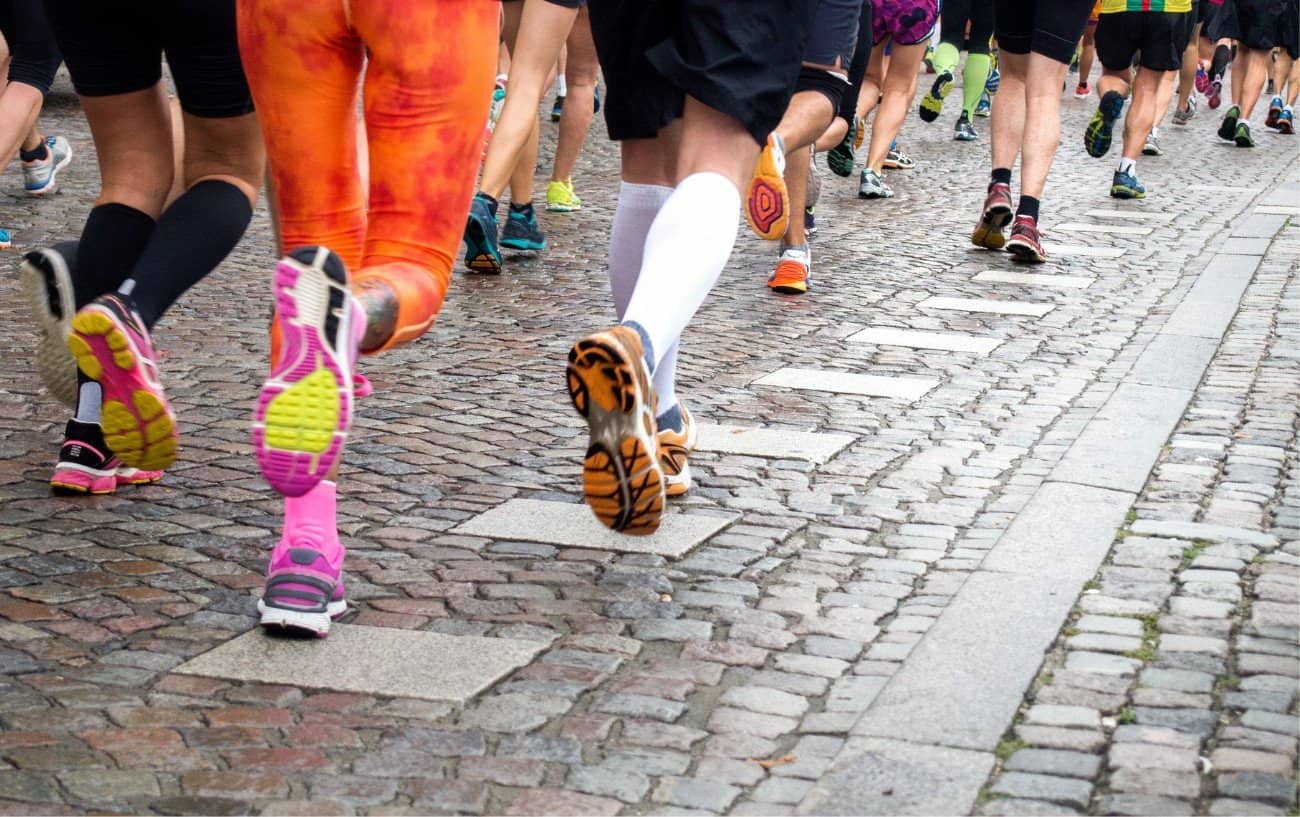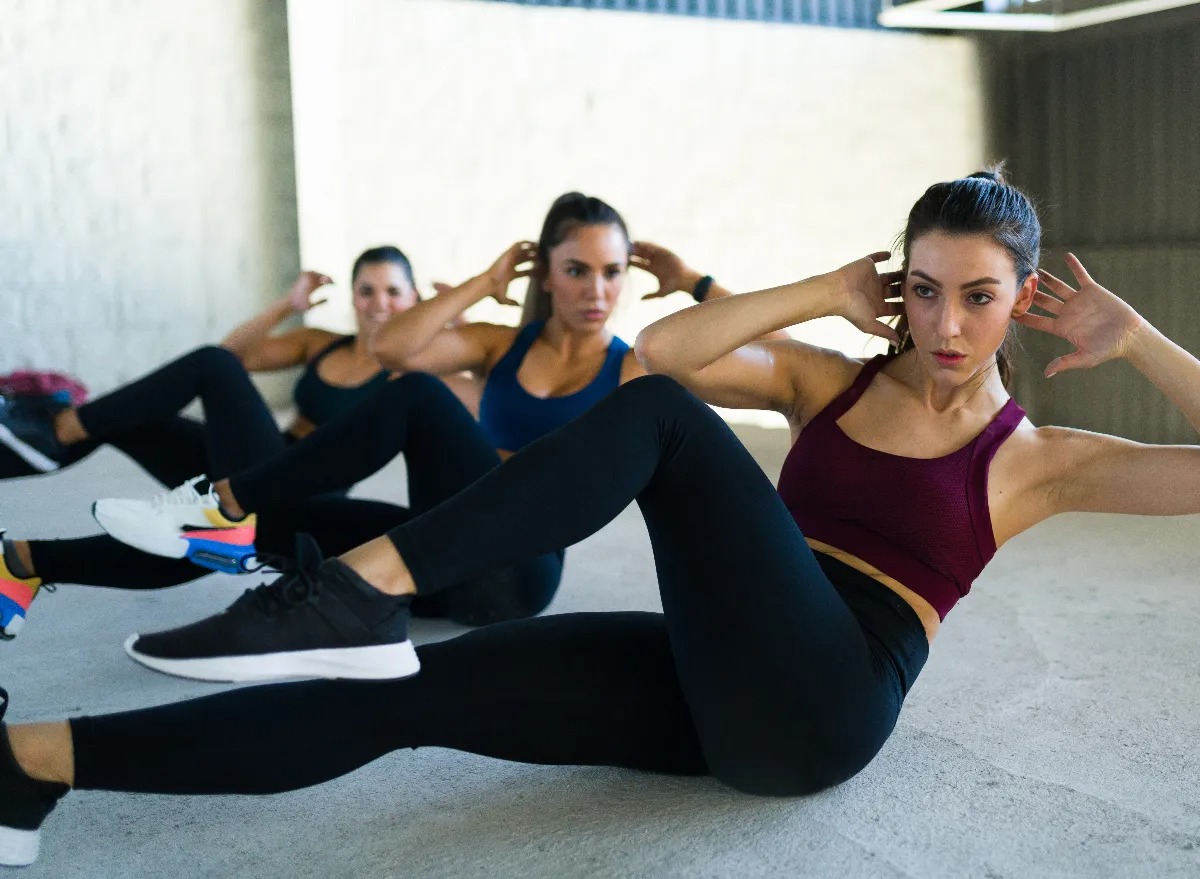Home>Misc>Featured>Why Does Having A Longer Leg Make Long Distance Running Easier
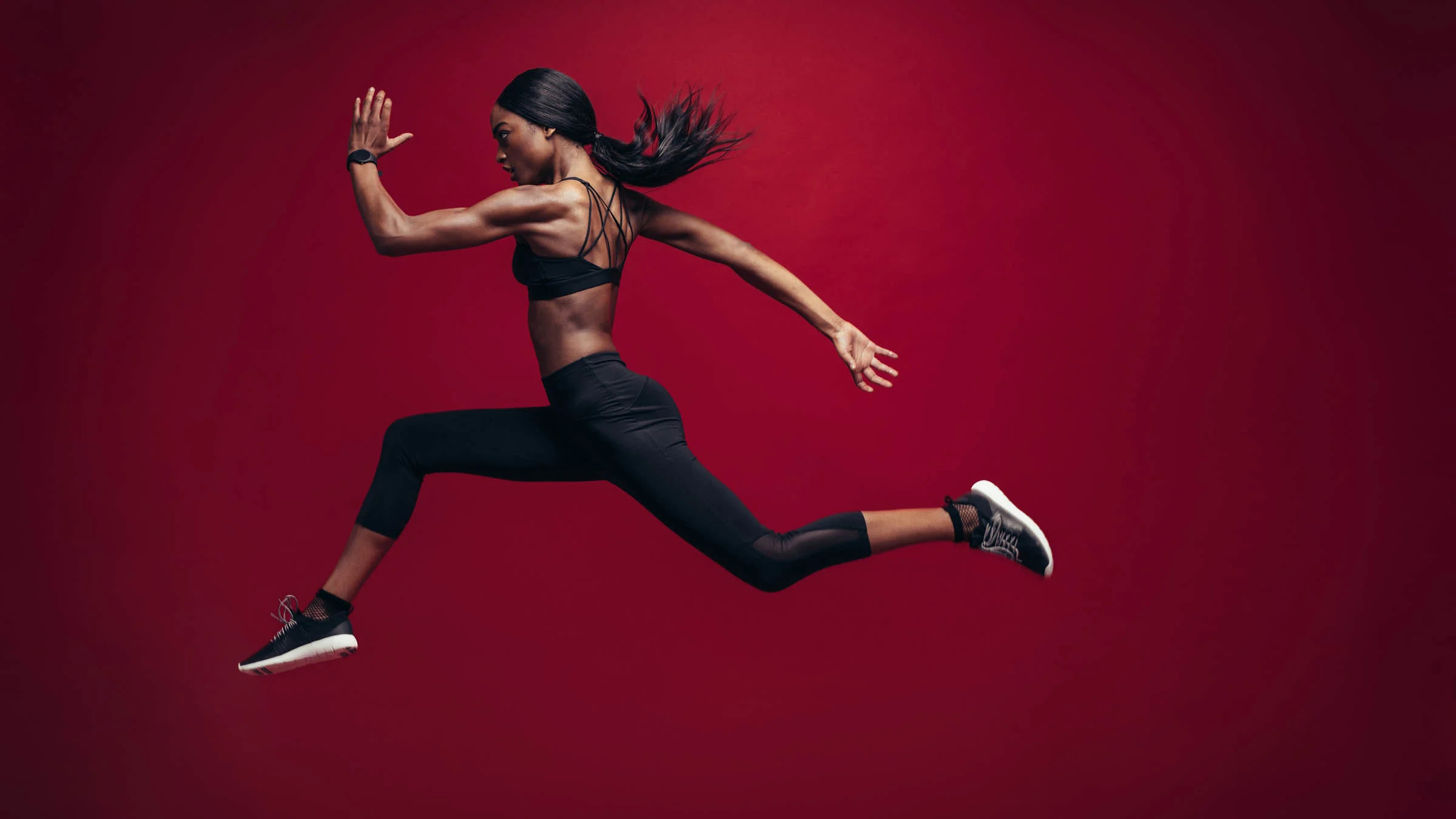

Featured
Why Does Having A Longer Leg Make Long Distance Running Easier
Modified: August 21, 2023
Discover the scientific explanation behind why having a longer leg can greatly enhance your long distance running ability in this featured article.
Introduction
Running is an activity that has captivated the human spirit for centuries. Whether it’s a casual jog through the park, a marathon race, or an ultra-distance adventure, running offers a myriad of physical and mental benefits. One of the key considerations for runners is leg length and its impact on performance.
The mechanics of running are a complex interplay of muscles, joints, and biomechanical factors. It is widely recognized that individuals with longer legs often have an advantage when it comes to long-distance running. But why is this the case? What exactly is it about having a longer leg that makes running easier?
In this article, we will delve into the fascinating world of biomechanics and explore how leg length contributes to running performance. We will uncover the advantages that longer legs offer and shed light on factors such as stride length, stride frequency, energy expenditure, and psychological factors that play a role in long-distance running.
By understanding the biomechanical nuances of leg length and its impact on running, runners can gain insights into optimizing their performance and potentially improving their running efficiency. Let’s dive in and explore the intriguing relationship between leg length and long-distance running.
The Mechanics of Running
Before we delve into the role of leg length in running, it is important to understand the basic mechanics of this fundamental human activity. Running is a complex movement that involves a coordinated effort of various muscle groups, joints, and biomechanical factors.
When we run, our legs act as levers, propelling our bodies forward. The primary muscles involved in running are the quadriceps, hamstrings, calves, and glutes. These muscles work in harmony to generate the necessary force to lift the body off the ground and propel it forward.
Additionally, the joints play a crucial role in facilitating smooth and efficient running. The ankle joint allows for foot flexion and extension, while the knee joint provides stability and helps absorb shock. The hip joint enables hip extension, contributing to forward propulsion.
As we pick up the pace, the body naturally adjusts its running form to optimize speed and efficiency. The arms swing in sync with the legs, providing a counterbalance and assisting in propelling the body forward. The torso remains upright, engaging the core muscles to maintain stability and minimize energy wastage.
It is worth noting that running is not purely a lower-body activity. The upper body and core contribute significantly to overall running performance. Proper arm swing, core engagement, and upper body stability help maintain balance, efficiency, and overall running form.
Understanding the mechanics of running sets the stage for exploring the impact of leg length on this complex movement. The length of our legs, specifically the femur and tibia bones, can have profound implications for our running efficiency and performance.
The Role of Leg Length
Leg length plays a significant role in our running biomechanics. It refers to the measurement from the hip joint to the ground, and it varies among individuals. People with longer legs have a greater distance between their hip joint and the ground compared to those with shorter legs.
One of the key reasons why leg length is important in running is its impact on stride length. Stride length refers to the distance covered in one step. Longer legs generally have a greater stride length potential, allowing runners to cover more ground with each stride. This can be advantageous in long-distance running, as it helps reduce the number of steps needed to cover a given distance.
Leg length also influences stride frequency, which refers to the number of steps taken per minute. In general, individuals with longer legs can maintain a higher stride frequency compared to those with shorter legs. This is because their longer limbs enable a more efficient stride turnover, allowing for a quicker and more fluid running cadence.
Another factor influenced by leg length is the amount of ground contact time, which is the duration of time that the foot remains in contact with the ground during each stride. Research has shown that runners with longer legs tend to have shorter ground contact times. This means that their foot spends less time on the ground, leading to a more efficient and faster running stride.
Leg length can also impact the angle at which the foot strikes the ground. Longer legs tend to result in a more extended leg position at initial ground contact, which can lead to more effective force absorption and power generation. This is particularly essential when running long distances, as it helps to minimize energy wastage and fatigue.
While leg length alone does not determine running ability, it does provide inherent biomechanical advantages that can positively influence performance. However, it’s important to note that other factors, such as muscle strength, joint flexibility, running technique, and overall fitness, also play crucial roles in running performance.
In the following sections, we will explore in more detail the biomechanical advantages that longer legs offer in long-distance running, including increased stride length and efficiency, reductions in oxygen consumption and energy expenditure, and the psychological factors that contribute to the perception of effort during running.
Biomechanical Advantages of Longer Legs in Running
Individuals with longer legs have certain biomechanical advantages when it comes to running. These advantages can positively impact stride length, stride frequency, energy expenditure, and overall running efficiency. Let’s explore some of the key biomechanical advantages of longer legs in running.
Increased Stride Length: One of the most significant advantages of longer legs is the potential for a greater stride length. With longer limbs, runners can cover more ground with each stride, reducing the total number of strides required to cover a given distance. This allows for a more efficient and energy-saving running technique.
Efficient Stride Turnover: Longer legs also enable a more efficient stride turnover, meaning runners can maintain a higher stride frequency. This is crucial in long-distance running, as a faster cadence can help individuals maintain speed and endurance over extended periods of time. It also reduces the risk of overstriding, a common running form mistake that can lead to inefficiency and increased injury risk.
Improved Force Absorption and Power Generation: Longer legs often result in a more extended leg position at initial ground contact. This allows for improved force absorption upon landing and more effective power generation during the push-off phase of the running stride. This can lead to more efficient energy transfer and reduced energy wastage, contributing to better overall running economy.
Better Running Mechanics: Longer legs can promote better alignment and running mechanics. The extended limb length allows for a longer moment arm, increasing the leverage and efficiency of the muscle groups involved in running. This can result in a smoother and more coordinated running gait, reducing the risk of imbalances and promoting better overall running form.
Reduced Oxygen Consumption and Energy Expenditure: Longer legs have been found to have a positive impact on oxygen consumption and energy expenditure during running. Research suggests that individuals with longer legs tend to have lower oxygen uptake and energy expenditure at a given speed compared to those with shorter legs. This can be attributed to the biomechanical and efficiency advantages associated with longer limbs.
While these biomechanical advantages can contribute to improved running performance, it’s essential to recognize that runners with shorter legs can still excel through proper training, technique, and overall fitness. Leg length is just one of many factors that contribute to running ability, and individual strengths and weaknesses can vary.
As we’ve explored the biomechanical advantages of longer legs in running, it’s important to also consider the psychological factors that can influence performance and the perception of effort during long-distance running. Let’s delve into this aspect in the following section.
Increased Stride Length and Efficiency
One of the key biomechanical advantages of longer legs in running is the increased potential for a greater stride length. Stride length refers to the distance covered in one step, and it plays a crucial role in long-distance running performance. Let’s explore how longer legs contribute to increased stride length and enhanced running efficiency.
Longer legs provide a greater distance between the hip joint and the ground, allowing runners to cover more ground with each stride. This means that runners can maintain a higher speed while taking fewer steps, leading to improved efficiency in long-distance running. A longer stride length also reduces the time needed to complete a given distance, giving runners a competitive advantage.
When runners have a longer stride length, they rely less on repetitive muscle contractions to cover the same distance. This has a direct impact on running economy, as it reduces the overall energy expenditure and fatigue associated with maintaining a certain pace. It allows for a more efficient and sustainable running style that can be maintained over extended distances.
Furthermore, a longer stride length allows runners to take advantage of the stretch-shortening cycle (SSC) mechanism. The SSC involves the rapid stretch and subsequent contraction of muscles, which contributes to increased power and energy efficiency. With longer legs, runners have a larger range of motion and can achieve a more significant stretch during each stride, maximizing the potential benefits of the SSC.
It is important to note that simply striving for a longer stride length is not always the best approach. Overstriding, which occurs when the foot lands too far in front of the body, can lead to increased impact forces and a less efficient running gait. The goal is to achieve an optimal stride length that allows for maximum efficiency and minimizes the risk of injuries.
In order to maximize stride length and efficiency, runners can focus on improving their leg strength, flexibility, and running technique. Strength training exercises such as squats and lunges can help develop stronger leg muscles, improving power and propulsion during each stride. Regular stretching and mobility work can enhance flexibility, allowing for a longer and more efficient stride.
In addition to physical preparation, runners can benefit from analyzing and refining their running technique. This includes maintaining an upright posture, engaging the core for stability, and utilizing proper arm swing. Stride length can also be optimized by increasing cadence and improving foot strike mechanics. Working with a running coach or undergoing gait analysis can provide valuable insights and guidance in this regard.
By understanding the relationship between leg length, stride length, and running efficiency, runners can focus on developing their strengths and improving their performance. While longer legs may confer certain advantages, individuals with shorter legs can still excel in running through proper training, technique, and overall fitness. The key lies in optimizing individual biomechanics and finding the most effective and efficient stride length for each runner.
Stride Frequency and Long Leg Benefits
When it comes to running performance, stride frequency, which refers to the number of steps taken per minute, plays a crucial role. Individuals with longer legs often have inherent biomechanical advantages that allow for a higher stride frequency. Let’s explore how longer legs contribute to stride frequency and the benefits they provide in long-distance running.
Longer legs enable a larger range of motion during each running stride. The extended limb length allows for a more efficient stride turnover, meaning runners can maintain a higher stride frequency. This is important in long-distance running, as a faster cadence can contribute to improved speed, endurance, and overall running efficiency.
A higher stride frequency has several benefits for long-distance runners. Firstly, it reduces the risk of overstriding, a common running form mistake where the foot lands too far in front of the body. Overstriding can increase the risk of injuries and negatively impact running economy. By maintaining a higher stride frequency, runners are more likely to land with their foot closer to their center of mass, reducing the impact forces and promoting a more efficient running gait.
Secondly, a higher stride frequency can contribute to a more efficient use of energy. By taking more frequent but shorter steps, runners can distribute the work and stress across different muscles and joints. This reduces the strain on any one particular muscle group and can help delay the onset of fatigue during long-distance running.
Moreover, a higher stride frequency allows for a smoother running motion. Each step becomes a smaller, more controlled movement, resulting in reduced vertical displacement. This means that runners experience less “bounce” or vertical oscillation with each stride. Minimizing vertical displacement can improve running efficiency by reducing the amount of energy wasted in vertical motion and directing it towards horizontal propulsion.
It is worth noting that increased stride frequency should not come at the expense of stride length. Balancing both aspects is essential for optimal running performance. Runners with longer legs have the advantage of being able to increase stride frequency without sacrificing stride length, as their longer limbs allow for a greater potential in both parameters.
To enhance stride frequency, runners can incorporate specific training techniques. Focusing on cadence drills, such as running with a metronome or music at a specific tempo, can help develop a faster turnover rate. Gradually increasing speed and practicing interval training can also improve overall stride frequency and running efficiency.
It’s important to emphasize that while longer legs may provide certain advantages in stride frequency, individuals with shorter legs can still excel in running through proper training, technique, and overall fitness. Every runner is unique, and finding the optimal stride frequency for their individual biomechanics is key to improving performance.
By understanding how longer legs contribute to stride frequency and the benefits they provide in long-distance running, runners can focus on optimizing their stride characteristics and enhancing their overall running efficiency.
Impact on Oxygen Consumption and Energy Expenditure
The length of our legs, specifically the femur and tibia bones, can have a profound impact on our oxygen consumption and energy expenditure during running. Research suggests that individuals with longer legs tend to have lower oxygen uptake and energy expenditure at a given speed compared to those with shorter legs. Let’s explore how leg length influences these factors and the implications for long-distance running performance.
One possible explanation for the lower oxygen consumption and energy expenditure in individuals with longer legs is the biomechanical advantages associated with longer limbs. Longer legs allow for a larger stride length, meaning that runners cover more ground with each stride. By covering more distance per step, the total number of steps required to complete a given distance is reduced.
By taking fewer steps, runners with longer legs can conserve energy. Each step requires muscular effort and energy expenditure, so reducing the number of steps reduces the overall energy demand during long-distance running.
In addition to stride length, longer legs also contribute to a more efficient running gait. The extended limb length allows for a longer range of motion, which can result in an improved push-off phase and more effective power generation. This means that runners with longer legs can generate more power with each stride, translating to a more efficient use of energy.
Furthermore, longer legs can impact the angle of initial ground contact. Runners with longer legs tend to have a more extended leg position upon landing, which can enhance force absorption and power generation. This optimized impact angle reduces energy wastage and improves overall running economy.
However, it is important to note that oxygen consumption and energy expenditure are multifactorial and influenced by various factors beyond leg length. Individual differences in fitness level, training background, running technique, and overall cardiorespiratory capacity also play significant roles.
It’s essential to recognize that while longer legs may provide inherent advantages, shorter-legged runners can still excel in long-distance running through proper training and focusing on other aspects of performance, such as technique and endurance conditioning.
To optimize oxygen consumption and energy expenditure, runners can focus on improving their overall fitness and running efficiency. This includes regular aerobic and endurance training to improve cardiovascular capacity, strength training to enhance muscle power and efficiency, and paying attention to running form and technique.
Additionally, runners can consider monitoring and adjusting their pacing strategies during long-distance races. By starting conservatively and gradually increasing speed, runners can prevent early fatigue and maximize their energy reserves for later stages of the race.
By understanding the impact of leg length on oxygen consumption and energy expenditure, runners can use this knowledge to optimize their performance by incorporating appropriate training methods and pacing strategies.
Psychological Factors and the Perception of Effort
When it comes to long-distance running, the impact of psychological factors cannot be overlooked. The perception of effort, mental stamina, and the ability to tolerate discomfort play critical roles in endurance performance. Interestingly, leg length can also influence the psychological aspects of running. Let’s explore how longer legs can impact the perception of effort and its implications for long-distance running.
Having longer legs can provide a psychological advantage by creating the perception of effortless running. With each stride, longer-legged runners cover more ground, which can create a sense of ease and efficiency. This perception can lead to increased confidence and a positive mindset, helping runners push through challenges and sustain their performance over longer distances.
Moreover, longer legs can be associated with an increased sense of stride power. The extended limb length allows for a greater range of motion and potential for generating more force with each stride. This feeling of power and propulsion can boost a runner’s confidence, making them believe that they can maintain an efficient pace and overcome obstacles throughout the race.
On the flip side, shorter-legged runners may experience different psychological challenges. As they cover less ground with each stride, they may feel as though they are exerting more effort to maintain the same pace as their longer-legged counterparts. This perception of increased effort can potentially lead to feelings of frustration or doubt, requiring them to employ mental strategies to stay motivated and focused.
It’s important to note that the perception of effort can vary among individuals, and psychological factors are highly subjective. Each runner’s mental approach and mindset can greatly influence their performance, regardless of leg length.
Long-distance runners can utilize various psychological techniques to enhance their performance, regardless of leg length. Mental conditioning, positive self-talk, and visualization can help individuals develop a mindset of endurance and resilience. Setting smaller goals, such as landmarks or time intervals, can also help break down the distance into manageable segments, reducing the perceived effort associated with a long race.
In addition, incorporating mental strategies to focus on running form, breathing rhythm, and maintaining a steady pace can help distract from the perceived effort and keep the mind engaged in efficiency and pacing. Adopting effective coping mechanisms such as distraction techniques, positive affirmations, or mindfulness can help runners overcome challenges and discomfort, enhancing mental resilience during long-distance runs.
Ultimately, while leg length may have an indirect influence on psychological factors through the perception of effort, it should not be seen as a limiting factor. Every runner has the potential to improve their mental stamina, regardless of leg length, by adopting and practicing psychological techniques that promote focus, motivation, and endurance.
Factors to Consider in Competitive Running
Competitive running requires a holistic approach that considers various factors beyond leg length. While longer legs may provide certain advantages, it is crucial for competitive runners to focus on a range of factors to enhance their performance. Let’s explore some of the key factors to consider in competitive running.
Training and Conditioning: A comprehensive training program is fundamental for competitive runners. This includes a balance of endurance, speed, and strength training to develop both aerobic and anaerobic capacities. Building a solid training base and gradually increasing intensity and volume are essential for improving performance and preventing injuries.
Running Technique: Efficient running form helps optimize performance and reduce the risk of injuries. Factors such as stride length, stride frequency, foot strike pattern, posture, and arm swing should be considered. Working with a running coach or undergoing gait analysis can help identify areas for improvement and implement appropriate adjustments.
Nutrition and Hydration: Proper nutrition and hydration play a vital role in competitive running. Fueling the body with the right nutrients before, during, and after a race or training session can enhance performance, promote recovery, and prevent fatigue. Working with a sports nutritionist can help develop a personalized nutrition plan based on individual needs.
Mental Preparation: Competitive running requires mental fortitude and focus. Developing mental strategies such as goal setting, visualization, positive self-talk, and mindfulness can help runners stay motivated, maintain concentration, and overcome mental and physical obstacles. Building mental resilience is key to perform at high levels consistently.
Race Strategy: Developing a race strategy based on individual strengths, goals, and the course profile is essential. Strategic pacing, understanding competition dynamics, and knowing when to push the limits are crucial factors in achieving optimal race performance.
Rest and Recovery: Adequate rest and recovery are vital for competitive runners to avoid burnout and overtraining. Balancing training with sufficient sleep, rest days, and active recovery techniques allows the body to adapt, repair, and strengthen, improving overall performance and reducing the risk of injuries.
Equipment and Gear: Appropriate running shoes and gear can make a significant difference in competitive running. Finding shoes that provide proper support and cushioning, as well as clothing that promotes comfort and allows for freedom of movement, can enhance running performance and reduce the risk of discomfort and injuries.
Environmental Factors: External factors such as weather conditions, altitude, and terrain can significantly impact race performance. Understanding and adapting to these factors, adjusting pacing and hydration strategies accordingly, is crucial for competitive runners to optimize their performance and mitigate potential challenges.
Race Experience and Adaptability: Gaining race experience and being adaptable to varying race conditions are valuable assets for competitive runners. Participating in races of different distances and terrains can help develop adaptability, mental toughness, and the ability to handle the unexpected, ultimately contributing to improved performance.
Maintaining Overall Health and Well-being: Competitive running should not come at the expense of overall health and well-being. Prioritizing recovery, managing stress, and listening to the body’s signals are important for long-term success and longevity in the sport. Striking a balance between training, competition, and life responsibilities is key.
While leg length may be one factor to consider, competitive running requires a comprehensive approach that accounts for physical, mental, and strategic considerations. By addressing these factors holistically, competitive runners can optimize their performance and strive for their personal best.
Conclusion
The role of leg length in long-distance running is a fascinating topic that encompasses biomechanics, physiology, and psychology. While individuals with longer legs may have certain inherent advantages, it is important to recognize that running performance is influenced by a combination of factors.
Longer legs can provide biomechanical advantages such as increased stride length, enhanced stride frequency, improved force absorption, and decreased energy expenditure. These advantages can contribute to improved running efficiency and potentially lower oxygen consumption during long-distance running.
However, it’s crucial to emphasize that leg length alone does not determine running ability. Other factors such as training, running technique, mental preparation, nutrition, and overall fitness play integral roles in achieving optimal performance in competitive running.
Furthermore, the perception of effort and psychological factors should not be overlooked. Psychological aspects such as confidence, mindset, and mental resilience can have a significant impact on long-distance running performance, regardless of leg length.
Competitive runners should focus on a holistic approach that encompasses various aspects of training and preparation. This includes optimizing running technique, developing mental strategies, implementing appropriate race strategies, considering nutrition and hydration, prioritizing rest and recovery, and staying adaptable in varying race conditions.
Ultimately, runners should strive to work with their unique strengths and weaknesses, whether they have longer or shorter legs. Through proper training, technique, mental conditioning, and a comprehensive approach to running, individuals can maximize their potential and achieve their personal best in long-distance running.
Remember, each runner is unique, and what matters most is the dedication, perseverance, and passion that is poured into the sport. Regardless of leg length, every runner has the ability to pursue their running goals, embrace the joy of the sport, and find fulfillment in the journey towards becoming a better and more accomplished runner.
